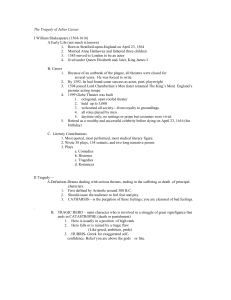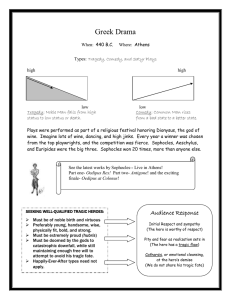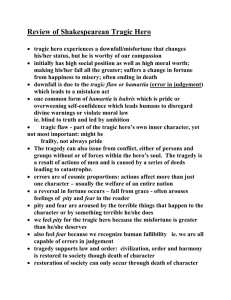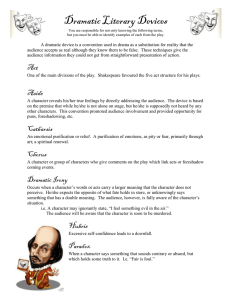Notes on Dramatic Structure and Shakespearean Tragedy DRAMATIC STRUCTURE
advertisement
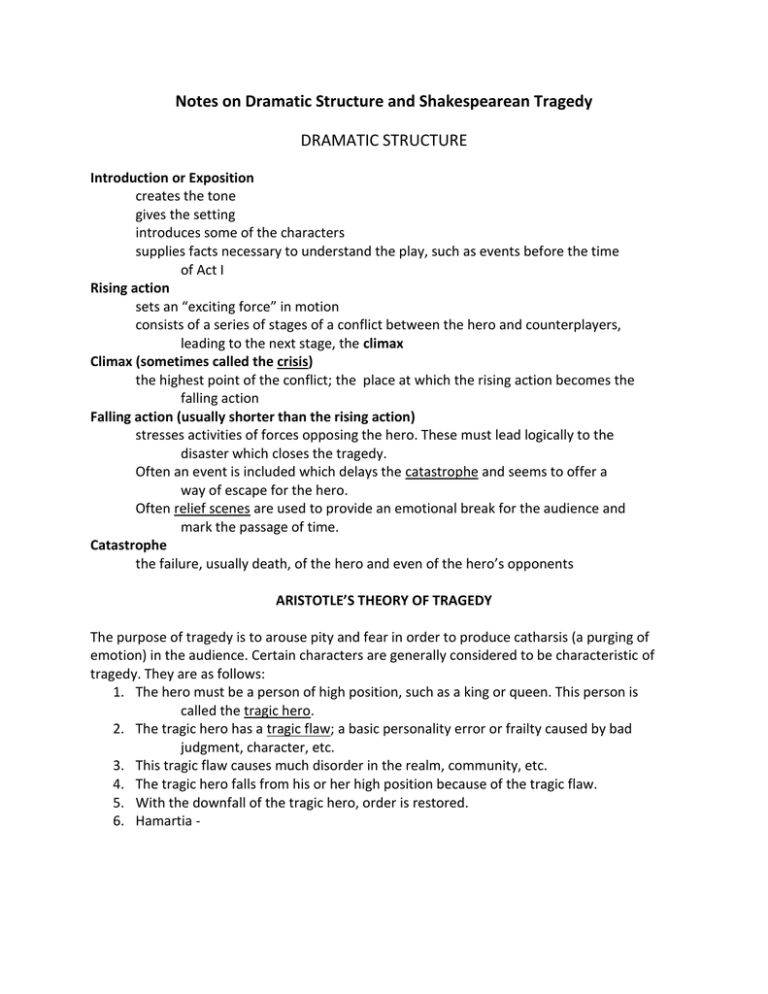
Notes on Dramatic Structure and Shakespearean Tragedy DRAMATIC STRUCTURE Introduction or Exposition creates the tone gives the setting introduces some of the characters supplies facts necessary to understand the play, such as events before the time of Act I Rising action sets an “exciting force” in motion consists of a series of stages of a conflict between the hero and counterplayers, leading to the next stage, the climax Climax (sometimes called the crisis) the highest point of the conflict; the place at which the rising action becomes the falling action Falling action (usually shorter than the rising action) stresses activities of forces opposing the hero. These must lead logically to the disaster which closes the tragedy. Often an event is included which delays the catastrophe and seems to offer a way of escape for the hero. Often relief scenes are used to provide an emotional break for the audience and mark the passage of time. Catastrophe the failure, usually death, of the hero and even of the hero’s opponents ARISTOTLE’S THEORY OF TRAGEDY The purpose of tragedy is to arouse pity and fear in order to produce catharsis (a purging of emotion) in the audience. Certain characters are generally considered to be characteristic of tragedy. They are as follows: 1. The hero must be a person of high position, such as a king or queen. This person is called the tragic hero. 2. The tragic hero has a tragic flaw; a basic personality error or frailty caused by bad judgment, character, etc. 3. This tragic flaw causes much disorder in the realm, community, etc. 4. The tragic hero falls from his or her high position because of the tragic flaw. 5. With the downfall of the tragic hero, order is restored. 6. Hamartia -
